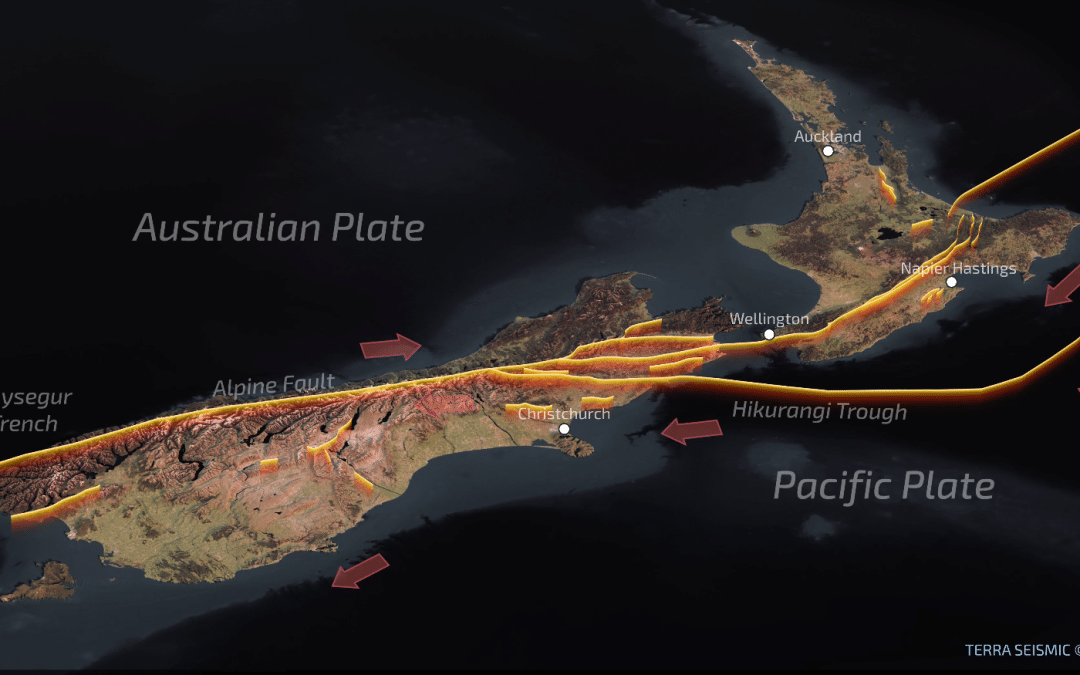Seismicity in New Zealand is extensively influenced by its position on the boundary between the Pacific Plate and the Australian Plate. This tectonic setting places it squarely in the Pacific “Ring of Fire,” a region known for its high levels of seismic and volcanic activity.
Subduction Zones: The Hikurangi Subduction Zone, where the Pacific Plate subducts beneath the North Island, and the Puysegur Subduction Zone, off the southern end of the South Island, are major sources of seismic activity. These zones can produce powerful earthquakes and potentially generate significant tsunamis.
Transform Faults: The Alpine Fault, running along the western side of the South Island, is a major transform fault marking the boundary where the Pacific Plate and the Australian Plate slide past each other. This fault is responsible for some of the most significant seismic activity in the region, including the potential for large earthquakes.
Crustal Earthquakes: Besides subduction and transform boundary-related earthquakes, New Zealand also experiences crustal earthquakes within the overlying plates. These earthquakes can occur at shallow depths and are typically less powerful but can still cause considerable damage, especially in populated areas.
Volcanic Activity: Volcanic processes related to the Pacific Plate’s subduction contribute to North Island seismicity, particularly in the Central Volcanic Region. Earthquakes associated with volcanic activity can vary widely in intensity and are an additional hazard.
Historical Seismicity: New Zealand has a history of frequent and occasionally very powerful earthquakes, such as the 2011 Christchurch earthquake and the 2016 Kaikoura earthquake. These events have shaped much of the current understanding and preparedness for seismic risks in the country.
Advanced Monitoring and Preparedness: New Zealand has developed sophisticated seismic monitoring networks and early warning systems, as well as stringent building codes that reflect the high seismic risks. Public education and preparedness programs are also extensively promoted throughout the country.
Tsunami Risk: Due to its extensive coastlines and offshore seismic activity, New Zealand faces significant risks from tsunamis, particularly related to subduction zone earthquakes.
These factors combine to make New Zealand a region with a high level of seismic hazard, necessitating continuous vigilance, research, and adaptation strategies to mitigate the impacts of earthquakes.

